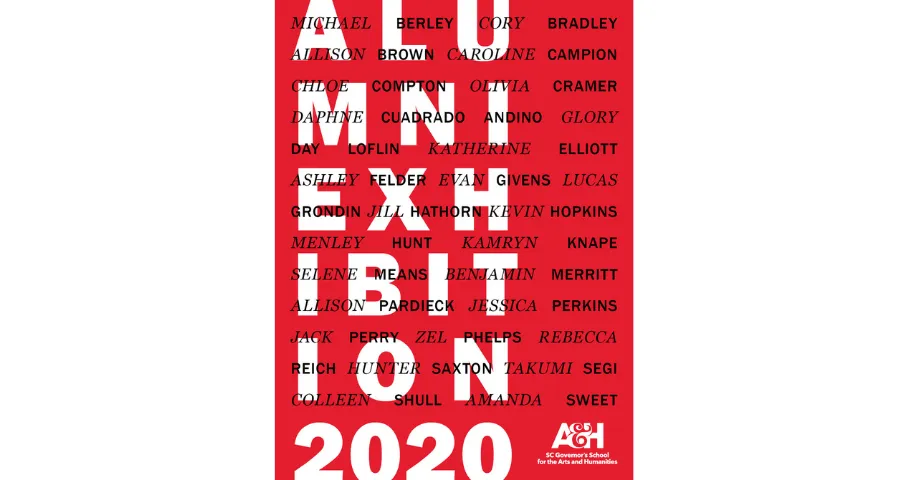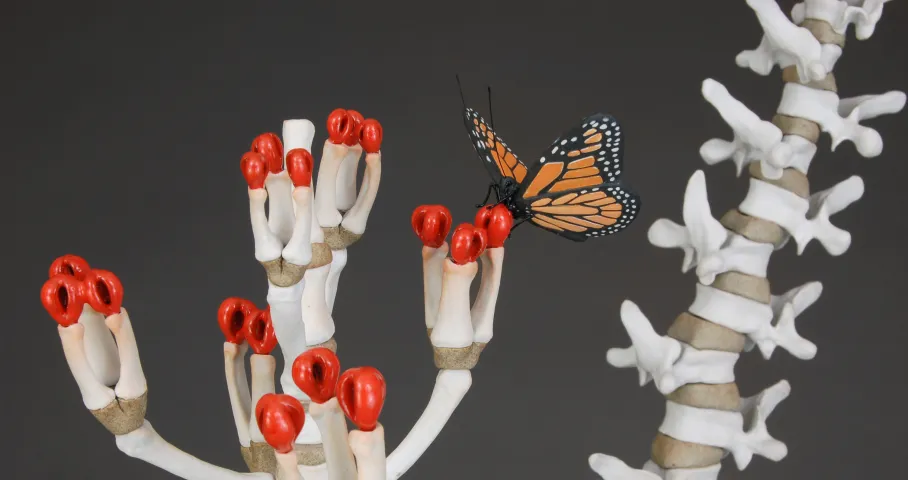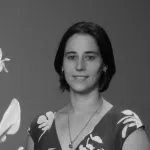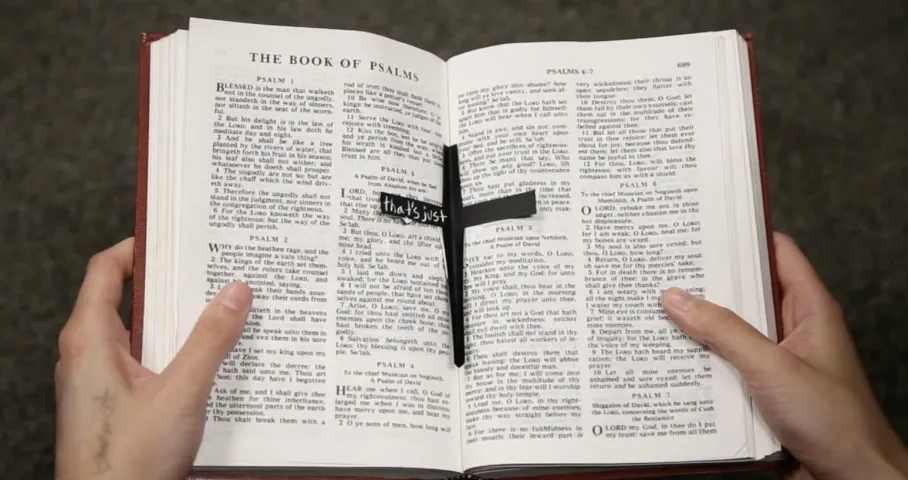20th Anniversary Visual Arts Alumni Exhibition

In 2019, as part of the year-long celebration of the Governor’s School’s 20th anniversary that would happen in 2020, the Visual Arts Department began to plan an exhibition to showcase the talent of our alumni. It was a monumental undertaking, a culmination of the vision and hard work of both students and faculty. Once the call went out to alumni, Visual Arts chair David Gerhard called upon Michael Brodeur, professor emeritus of Furman University and the founding chair of Visual Arts Department, to serve as the juror for the show. It was Brodeur who whittled down the many stunning entries to a selection of 27 pieces, which we had planned to hang in the Lipscomb Gallery.
To be clear, this is not student work. It is, instead, the current work of our graduates, made well after their time at the Governor’s School. But, as Gerhard points out, these pieces carry with them the spirit of the Governor’s School, that “spirit of professionalism and a serious investigation of oneself and the world.”
In speaking of the collection, Brodeur says, “At the heart of every successful piece—successful in that the viewer is constantly engaged—the work of art transcends the time of its creation. The quality that is kindred to art of every time period or style is the understanding of the abstract core that transforms the artists’ skills from recorders of the literal data presented before them into works of art that are memorable.”
Below, we present selections from the show in order of class year.
Rebecca Reich
Residential High School Program, 2004
.jpg)
5" x 6" x 1"
Resin, dye
.jpg)
3" x 4" x 2"
Resin, dye
Artist Statement: The Rorschach Cameo series is a study of the human form as both site and subject for body adornment. The figure historically has been a popular motif in jewelry, particularly in carved relief cameos and engraved intaglios. Although a popularly held image of the cameo is that of an idealized woman’s profile, the cameo has varied over time and cultures to include images of mythology, Biblical figures, as well as individuals of political importance.
I am interested in visiting the cameo in my own work, interpreting this historical jewelry object through contemporary forms, colors, and materials. Even with significant degrees of abstraction, I have found that viewers are generally apt, or maybe inclined, to recognize the human form. Drawing from this observation, every piece in this series distorts the figure to a greater or lesser degree. Additionally, each piece is symmetrical. This is in reference to the psychoanalytical Rorschach inkblot test. An analyst trained in administering the test would be able to derive useful insight into a subject’s subconscious based on their answers to the abstract visual test. I intend to make reference to the interpretive nature of the blot test, allowing my abstracted cameos to exist in their own wearable dreamscapes.
Ashley Felder
Residential High School Program, 2011
.jpg)
4' x 4' x 7'
Salt, mono filament, water, wood, steel

4.5' x 4.5' x 6'
Rye grass, soil
Artist Statement: My work explores the qualitative conditions of the human body in relation to quantitative measurements. I believe that art is a verb and a means to explore existential questions about being human, taking up and moving through space, and experience the passage of time.
One way I have explored these ideas is through creating equivalencies of physical aspects of my own body and translating them through material and action. Concrete measurements are translated into poetic abstractions to understand certain aspects of existence in different ways.
Salt Body is a conical form made of salt that represents the actual volume of my own body. Salt is a material that relates to bodily function as well as spirituality, permanence, and purification. The still, mountain-like form of salt that references bodily presence is also a meditation on the impermanence of the human body.
Cloud Skin (433) is a work made from salt that involved the task of counting the lines and creases in my skin and creating the same number of wrinkled salt skins that hang together in a cloud-like arrangement, which is a reference to the unique and invisible microbial cloud that surrounds the human body. It is also a number that will undoubtedly change in time, thus capturing one point of data in my duration on earth.
Pastoral is a work composed of a section of green grass as though cut from a pasture. The area is equal to the surface area of my skin and contains an impression of my body created through the act of laying on it. This piece relates to my associations and memories to my family’s farm and my absence within that space.
Benjamin Merrit
Residential High School Program, 2015

22" x 30"
Etching

22" x 30"
Etching
Artist Statement: My prints seek to challenge normative readings of the culturally and scientifically constituted body through the use of text. This scientific body is a body that is complete and never changing, a body that is individual and closed, a body that is readable, and a body known through sight. These ideas are constructed by ideological structures such as language and objectivity, as well as cultural institutions like hospitals. In my work, I don’t seek to denounce these ideological structures and institutions (as my relationship to them is one of necessity) but rather to suggest ways of rethinking the constructed body that are more beneficial to, and understanding of, bodies that don’t fit into these norms. I do this by interweaving my experience of chronic illness with the language and history of medicine.
I utilize processes of printmaking such as copper plate etching, monotype, lithography, and artists’ books. These printmaking methods produce textures and marks that are very bodily, specifically the printed mark acting as an image relating to scarring, rubbing, or touching. I contrast forms of writing such as indexes and clinical documents with personal and theoretical writing that explores my own relationship to illness, as a person living with a chronic autoimmune disease, as well as themes of how the patient body is historically written and recorded.
Kevin Hopkins
Residential High School Program, 2018

24" x 48"
Acrylic paint, marker, pen, paper collage
Artist Statement: The painting is intended to represent a personal record of family and societal troubles. The work combines intimate sketches and inexpensive materials to convey a sense of worry and uncertainty.
The piece is a collage of several situations and struggles that have affected my family in recent years. My brother's arrest, my mother’s deteriorating health (despite her claims that she’s just fine), my contradicting thoughts on the black community's perception, etc. This piece was made, for the most part, on my bedroom floor with little consideration for the ideas of contrast, composition, or reason. It was made as an expression of my concerns; fear of the situations I have listed and the situations that may arise because I am a black man in America.
*****
We invite you to view the full catalogue of this breathtaking exhibition featuring the following artists:
Cory Bradley '01
Colleen (Gleason) Shull '01
Amanda Sweet '03
Jill (Fallon) Hathron '04
Rebecca (Annand) Reich '04
Olivia Cramer '05
Katherine Elliott '05
Daphne Cuadrado Andino '07
Jack Perry '07
Allison Brown '08
Glory Day Loflin '10
Joshua ‘Zel’ Phelps '10
Ashley Felder '11
Evan Givens '11
Selene Means '13
Chloe Compton '15
Benjamin Merrit '15
Allison Pardieck '15
Menley Hunt '16
Hunter Saxton '16 (in collaboration with Elinore Noyes)
Caroline Campion '17
Kamryn Knape '17
Lucas Grondin '18
Kevin Hopkins '18
Takumi Segi '18
Jessica Perkins '19
Thank you to our adjudicator, Michael Brodeur, and to all of our incredible alumni who participated!


